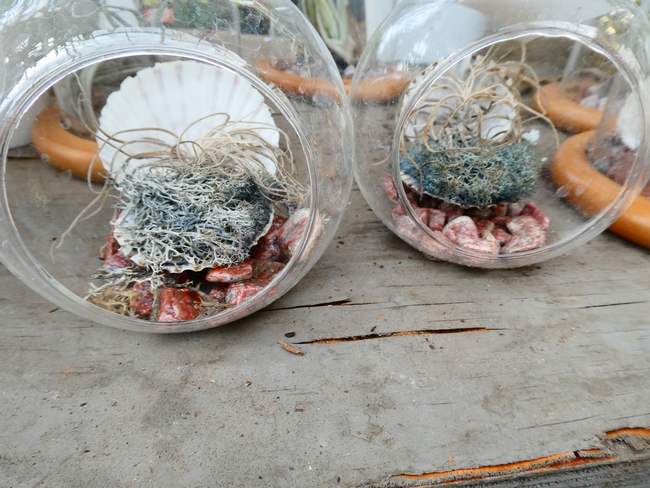Research Before You Buy-Why?
Maybe it's just me — an ordinary gardener who's growing a little skeptical while getting a bit older. Or is there actually a disconnect from what the marketplace is selling us and what research and experience show? For the sake of both the plant and our pocketbook, shouldn't we know a little something about what we're about to buy? Here's what I mean:
As I write this I'm looking at a photo in glossy mail-order catalog from a classy well-known store. The item for sale is titled “Faux Succulent Wall Panel” and features a wall hanging consisting of four separate yet different panels, each appearing to contain a random mix of Echeveria, Aeonium, other fake succulent look-a-likes — and several Tillandsia — all glued onto fake moss and fake dirt.
What? Tillandsia? A Tillandsia is not a succulent, but an epiphyte. A Tillandsia does not grow in soil or moss, but retrieve nutrients from the air. That's why it's commonly called an air plant. As a consumer, I see a problem with this “Faux Succulent Wall Panel” because I have over three dozen plants in my personal collection. As a Master Gardener, I really don't want to give this a pass because I've researched Tillandsia thoroughly enough to write and speak about the topic. But at this point in time, I doubt the retailer knows or cares about the difference between a succulent and an epiphyte, and could argue that little harm is done to the consumer because we're talking about fake plants here.
But what about real living Tillandsia — the groupings of air plants now on display in our local brick and mortar stores, especially those on garden section shelves? From my observation, many are dead on arrival since air plants have no chance of survival when drowned in water, over-saturated with moisture and suffocated in the soil. This has actual consequences for both plants and consumers. Pretty packaging won't console unknowing consumers who all too soon will discover their purchase a disappointment — and a waste of money. For example:
• Photo No. 1 shows Tillandsia xerographica – a rare epiphyte from El Salvador, Guatemala, and Mexico. This air plant is currently on the CITES list of endangered species. So why is this exquisite beauty, known by many as the Silver Queen, stuffed into dirt-filled pots and watered with a hose like every other plant in the nursery section? Death is imminent. Cause: soil suffocation and drowning.
• Photo No. 2 shows air plants glued to moss that is glued to a bottom plate that is covered with a cute little glass top. No air can enter the container and the moisture buildup evident inside cannot escape. Death is imminent. Cause: oxygen deprivation and drowning.
• Photo No. 3 shows air plants also glued to moss glued to the bottom of mini terrariums with a side opening. Notice the light brown color of the Tillandsia. Cause of death: Fried, dried, glued and neglected.
For me, the shelf condition of these air plants clearly illustrates the importance of knowing a little something about what you're buying — not only for the sake of the plant but your wallet. One cannot underestimate the intrinsic value of research. To increase our success as gardeners, taking time to do a little investigation before choosing plants is critical. So is learning the best season and best location in which to plant that tree you want. And discovering which variety of vegetables is more disease resistant.
Here on this blog, you'll find information on an infinite number of topics written by Master Gardeners who are just ordinary people passionate about plants. We enjoy sharing not only great experiences but the mistakes we make, and the resources and research results we unearth along the way. We take to heart what Master Gardener Program Coordinator, Jennifer Baumbach, tells each new crop of MG graduates: You don't need to know all the answers about every topic or every plant. What is most important is knowing where to go to get the answers.
In the meantime, check out Gardening Resource Guide, Second Edition, Published July 2016. This 108-page hidden gem of information and resources specific to Solano County is available for purchase through Master Gardeners of Solano County. For your copy, visit us Monday through Friday 8 a.m. - 12 p.m. and 1 p.m. - 5 p.m. at 501 Texas Street, First Floor, Fairfield, CA 94533, solanomg.ucanr.edu, 707-784-1322.

Photo No. 1

Photo No. 2

Photo No. 3



